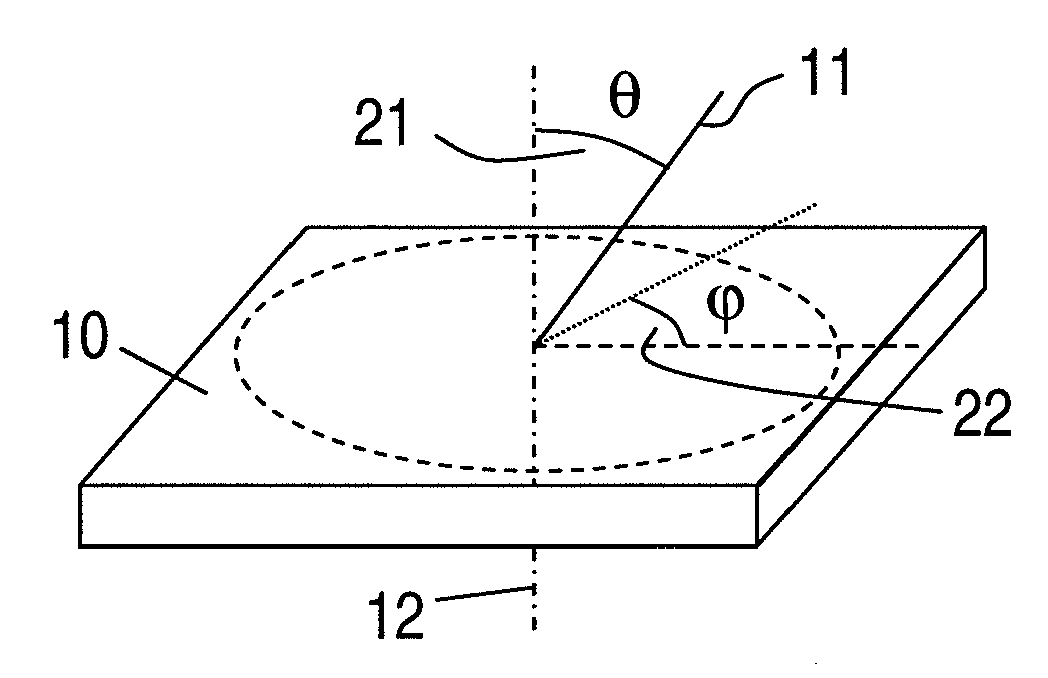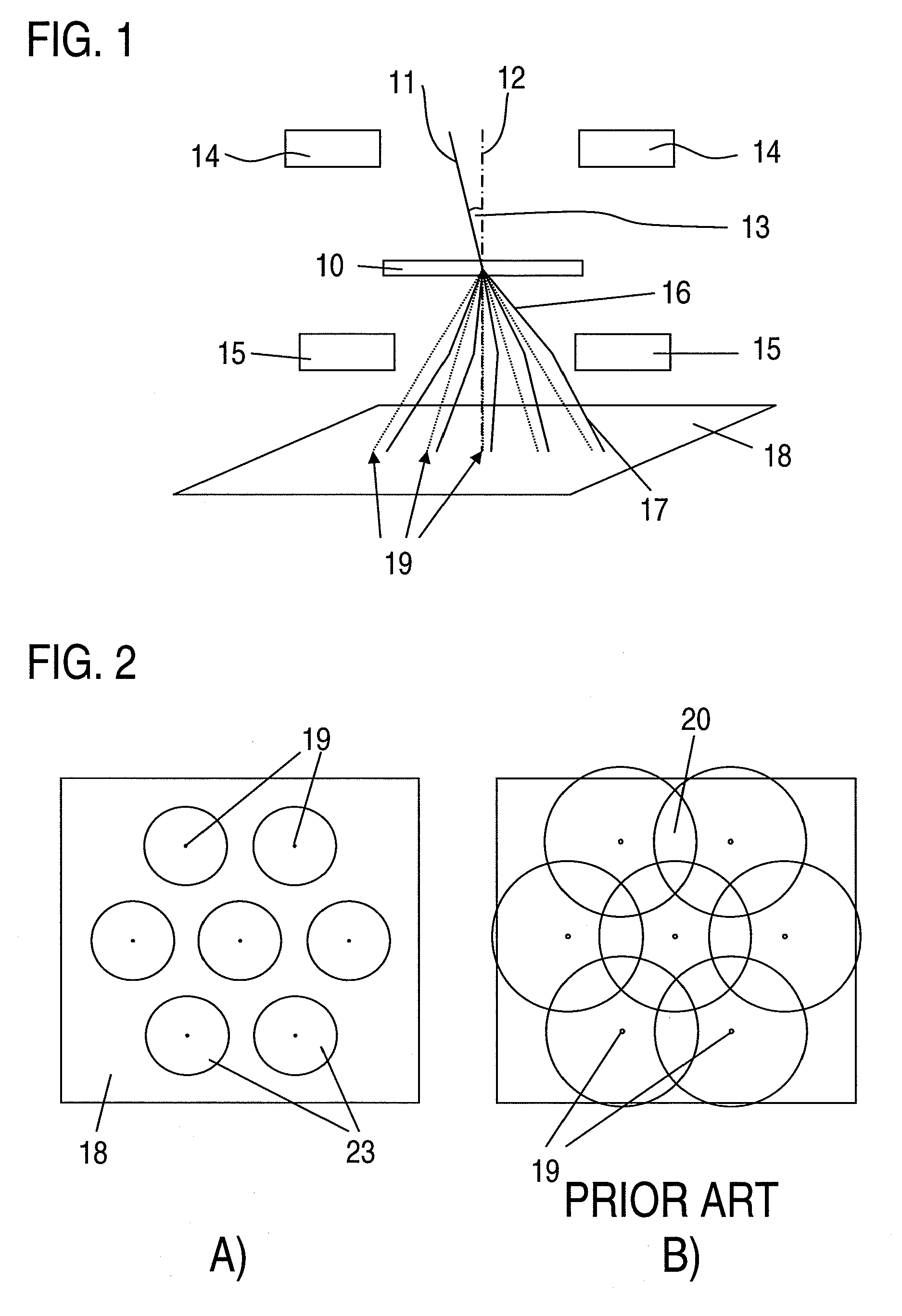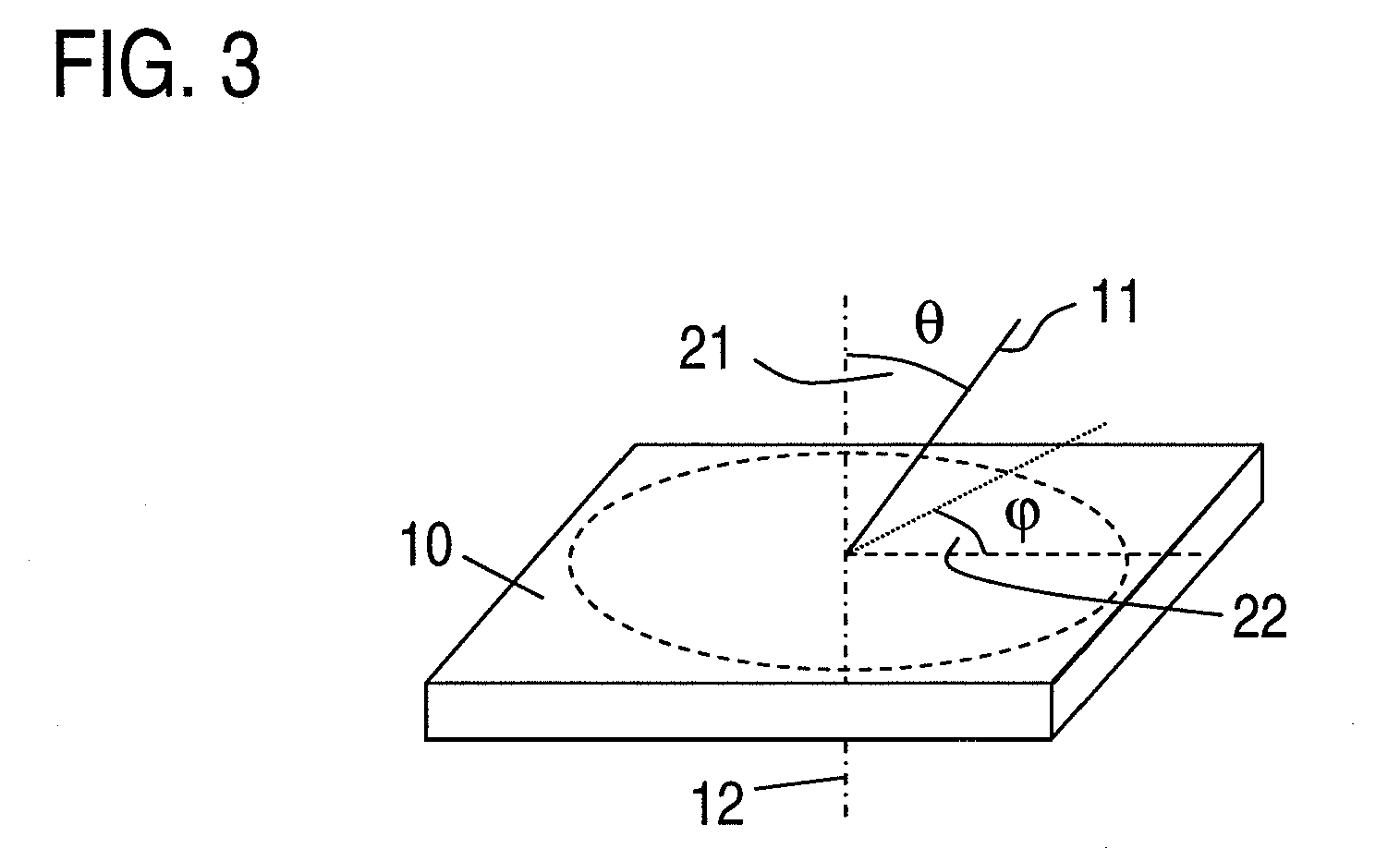Method and device for measuring electron diffraction of a sample
- Summary
- Abstract
- Description
- Claims
- Application Information
AI Technical Summary
Benefits of technology
Problems solved by technology
Method used
Image
Examples
Embodiment Construction
[0021]According to the inventive method, the incident electron beam hits a sample at an angle of incidence relative to a sample axis. The sample axis is an axis having a fixed orientation with respect to the sample. The sample axis can for example be a surface normal to a slide-shaped sample. Preferably, the sample axis is collinear with an optical axis of the experimental setup, e.g., a transmission electron microscope. The angle of incidence with respect to the sample axis comprises two components, the inclination angle θ and the azimuth angle φ as illustrated in FIG. 3. The inclination angle θ is preferably larger than 0.
[0022]A part of the electron beam illuminating the sample is transmitted through the sample undiffracted and at least part of the electron beam is diffracted by the atomic structure of the sample. Accordingly, the electron beam transmitted through the sample comprises undiffracted and diffracted beams which emanate from the sample under various scattering angles....
PUM
 Login to View More
Login to View More Abstract
Description
Claims
Application Information
 Login to View More
Login to View More - R&D
- Intellectual Property
- Life Sciences
- Materials
- Tech Scout
- Unparalleled Data Quality
- Higher Quality Content
- 60% Fewer Hallucinations
Browse by: Latest US Patents, China's latest patents, Technical Efficacy Thesaurus, Application Domain, Technology Topic, Popular Technical Reports.
© 2025 PatSnap. All rights reserved.Legal|Privacy policy|Modern Slavery Act Transparency Statement|Sitemap|About US| Contact US: help@patsnap.com



